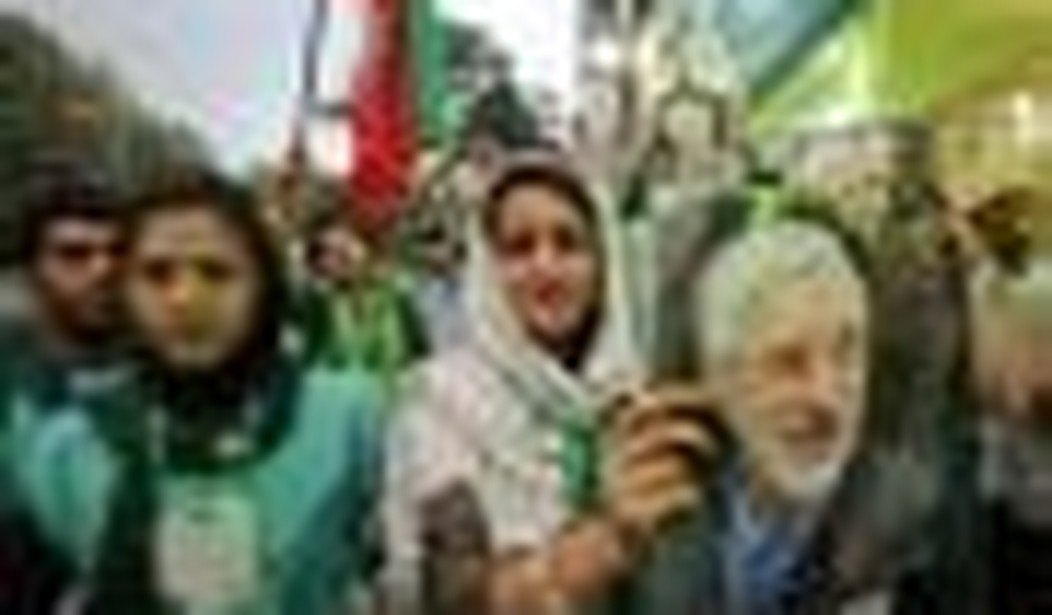One of the Green Movement’s biggest problems is the Western media’s expectations game. Since the Green Movement put together crowds of millions in 2009, the media now uses that as the standard for determining whether the Greens are succeeding or not and whether their actions deserve coverage. Such is the case with the Student Day protests on December 7 and the acts of defiance on and around the Ashura holiday.
Last week, the Iranian regime worked hard to avoid repeating the threat to its existence it faced last year. The holiday, which is in honor of Imam Hossein, was used by Ayatollah Khamenei to link fighting the shah’s oppression with the imam’s martyrdom. Today, the Greens are doing the same to the ruling regime.
Dozens of people were arrested and anyone gathering in groups in Tehran was forcibly dispersed. It was reported that in the morning, many cell phones in Tehran were unable to operate. Trash bins were taken away to prevent them from being set on fire and no cars were allowed to be parked on streets that have been the scene of major gatherings. Security personnel confiscated cameras to stop images of protests from spreading. The family members of those visiting the graves of their loved ones lost at the regime’s hands last year were only allowed to visit the graves of their relatives and could not express solidarity with the families of others.
These measures did not stop scattered acts of protests that were quickly put down. In one incident, protestors in Tehran chanted “Iran has turned into Palestine” and were attacked by Basij members on motorcycles. In another, 100-150 people chanted in a train station and security pushed them outside and had to lock the doors to stop them from entering. In some cases, the people fiercely struck back. Various clashes erupted between mourners and demonstrators and security personnel before, during, and after Ashura.
One Basij member riding a motorcycle crashed in Tehran after being pelted with sticks. The Revolutionary Guards arrested three young women for not wearing their veils. As they put them into a van to be taken away, the locals surrounded the vehicle and freed them. There are reports of the Basij’s motorcycles being wrecked and security cars having their windows smashed. One security forces station was attacked so ferociously in Tehran that all of its windows were shattered and the personnel fled.
These acts of protests are inspiring but they won’t inspire confidence in the Western media or leadership that the Greens are the winning side. Unfortunately, the opposition is stuck in a demoralizing catch-22: To get the attention of the world, they need to put together crowds numbering in the hundreds of thousands. But to build such momentum, they need media coverage to spread the word and motivate their supporters. In a strange way, the Greens have become a victim of their own success by setting the bar so high last year.
This inability to mobilize should not be mistaken for a decrease in passion. The internal conflict in Iran’s government shows that the regime’s wounds remain unhealed and, if anything, are expanding as Ahmadinejad makes politically explosive moves like firing the foreign minister. The opposition just needs that triggering moment that enflames the population. And Ahmadinejad may be giving them just that by ending subsidies for some consumer items despite widespread outrage.
One of the most underreported Iran-related stories is that the regime has begun phasing out subsidies, causing huge increases in the price of food and other essential items. Gasoline prices rose by almost 60 percent over a single night, though the regime is selling fuel at a major discount to try to stem the blowback. The regime’s catch-22 is much tougher to manage than the Greens’. The regime is suffering from a major gasoline shortage, but the last time it tried to ration gasoline in 2007 it resulted in gas stations being set on fire throughout Tehran. The current course is unsustainable. Already, taxi drivers in Hamedan have gone on strike and bus drivers in Bandar Abbas and factory workers in Khuzestan, Qazvin, and Tehran are calling for action.
The regime is still on a downward trajectory, even if its security forces have not defected en masse and huge protests have been stopped from happening this year. The struggle is still happening, yet the media has acted as if it’s been over since July 2009. Equally impressive protests later that year received only a fraction of the attention the post-“election” ones did. In 2010, there has been virtually no coverage of other protests, including the most recent ones on Student Day and Ashura. The Western media didn’t even pay any attention to the recent testimony of an alleged Iranian nuclear scientist that claimed he personally worked on developing a nuclear bomb at a secret enrichment site. As far as I know, even Fox News didn’t run a segment about it.
The Greens now have an additional obstacle ahead of them: impressing the Western media. To do so, they will need that galvanizing moment that causes the Iranian people to make their voices heard as they did in 2009. Perhaps the regime will make the misstep of arresting Mousavi or Karroubi or the controversial subsidy plan will cause a headline-generating workers’ strike that will arise too quickly for the regime to stop it. Maybe we’ll have to wait a little bit longer for Khamenei to die and spark a vicious battle inside the regime. Whatever that event may be, it will come and the Iranian people will again scream to be heard by the media.









Join the conversation as a VIP Member